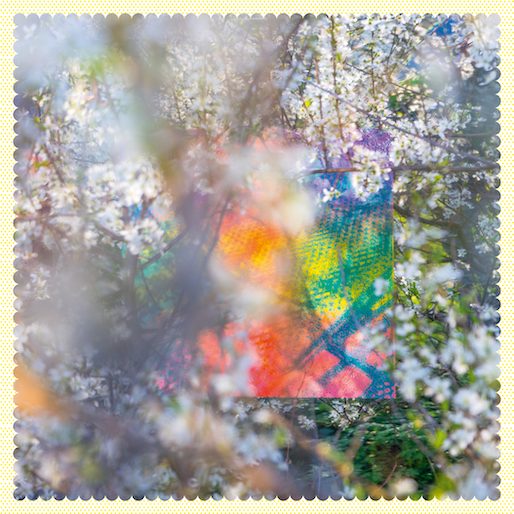Four Tet Takes the Dancefloor Outside on Sixteen Oceans
House music for house plants
Music Reviews Four Tet
It feels almost predestined that Four Tet’s new album was released on a day many spent preparing to lock themselves inside. Sixteen Oceans, Kieran Hebden’s 10th album as Four Tet, sounds like a beam of spring sunlight cascading through a window, warmly seeping into your skin while dust particles and errant thoughts drift loosely overhead.
The balmy texture that dominates the record is largely a result of the emphasis on natural sounds. A brook babbles in the mix just as often as the bass hits, while a passing wind pushes Hebden’s penchant for captivating percussion through sets of wind chimes. Chirping birds show up on most of the album’s 16 tracks, a lovely motif representing the vantage point from which Hebden reflects on his career and personal life while developing Sixteen Oceans’ unique ecology. As the album moves toward its meditative conclusion, it’s clear that Hebden is more interested in reconfiguring past Four Tet ideas into something more immediately naturalistic and introspective than developing a new palette altogether.
Songs on Sixteen Oceans often resemble repurposed field recordings. Especially noticeable on the album’s handful of largely ambient tracks (“Hi Hello,” “ISTM,” “1993 Band Practice” and “Bubbles at Overlook 25th March 2019), it’s also apparent in the album’s biggest dancefloor hit, “Baby.” Built around chopped and glitched vocals from Ellie Goulding, airy synths and atmospheric percussion simmer in an enigmatic mix. As the track fades out, a car drives by in the distance; moments later, the sounds of water flowing down a gentle creek appear. Hebden finds the melody in those noises, bringing “Baby” back to its bubbling groove.
The gossamer synths and crunchy percussion on album opener “School” recur throughout the album’s four-on-the-floor heavy first half, but Hebden’s arsenal of strings appears just as often. “Harpsichord” shows off one of Hebden’s favorite instruments in what sounds like a sonnet leaping off the page, leading into infatuated banger “Teenage Birdsong.” Immediately afterwards, the delicately plucked “Romantics” layers Victorian instrumentation with flittering synths, paving the way for the quietly brooding “Love Salad.” Taken as a unit, this four-song run is a great example of Sixteen Oceans’ elegant sequencing, building a clear emotional arc out of sonics and song titles alone.
But it’s the energizing raga of “Insect Near Piha Beach” that pivots the album toward its better second half and stands alone as its best song. Beginning with industrial percussion and a deep house beat, the track makes room for trilling vocals and a delicate sitar, its acoustic warmth wonderfully filtered through a synthetic window. (The same can be said of “Something in the Sadness,” “Green” and “4T Recordings,” though each track gets increasingly formless as environmental sounds overwhelm toward the record’s finale.) “Insect Near Piha Beach” is a club track for house plants, warmly rendered with artificial textures that still feel natural, like drifting in and out of consciousness in a living room’s sunspot.
Sixteen Oceans closes with “This Is for You” and “Mama Teaches Sanskrit,” both quiet and empathetic movements dedicated to Hebden’s daughter. The latter track incorporates the album’s clearest vocal line, a recording of his daughter and wife practicing Sanskrit, over delicate synths and chiming brass. There’s hardly a groove to the song, but it doesn’t need one. Instead, “Mama Teaches Sanskrit”—and Sixteen Oceans as a whole—suggests that Hebden is ready to move on from the dancefloor. With such lovely environmental textures, Sixteen Oceans makes it easy to imagine how warm a fully ambient album from Four Tet might be. For now, it’s nice to be able to stare out the window with Sixteen Oceans.